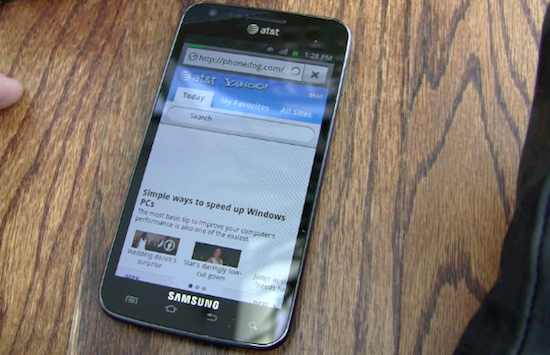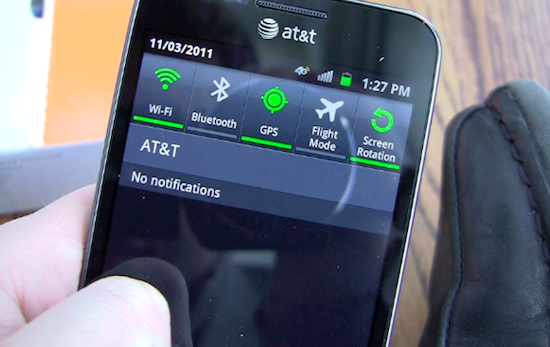
AT&T's moving right along with the 4G LTE rollout, having migrated to four additional cities as of Sunday: Boston; Baltimore; Washington, DC; and Athens, GA. That brings the total number of markets to nine nationwide; a far cry from Verizon's 165 markets, but a good start nonetheless.
In addition to the new 4G LTE markets, the nation's second largest wireless carrier celebrated the day by rolling out two new LTE handsets: the HTC Vivid and the Samsung Galaxy S II Skyrocket. Like the HTC Vivid, the Galaxy S II Skyrocket is a feature-packed 4G LTE smartphone, with a 1.5 GHz dual-core CPU, 4.5-inch Super AMOLED Plus display, 8-megapixel camera with 1080p video recording, and Android 2.3 with TouchWiz 4.0. It tips the scales at $249.99 with a two-year agreement, which is $50 more than the similarly-spec'd Vivid.
I've been working with the Skyrocket since Thursday, and overall, I've been pretty pleased. My findings:
- Skyrocket packs a 1.5 GHz dual-core Snapdragon processor - the same as the T-Mobile Galaxy S II, though it's from a different processor family. Given the noticeable speed difference between the Exynos and Snapdragon processors on the first wave of US Galaxy S II devices, I was concerned that we'd see the same issue here. So far, the Skyrocket has performed well, and while I still notice a slight difference in comparison to the Exynos chip (particularly when browsing the web), it appears to be an improvement over T-Mobile's Snapdragon-toting Galaxy S II.
- The 4.5-inch Super AMOLED Plus display is on the large side, but the added screen real estate is beneficial when browsing the web or watching videos. Like Samsung's other Super AMOLED Plus devices, the Skryocket's display is rich and beautiful. It's a bit wider and fatter than the display on the Vivid (which is also 4.5-inches), giving it a different feel in the hand.
- As I've said before, Samsung's TouchWiz 4.0 UI (which runs atop Android 2.3.5) is a huge improvement over the version found on the Infuse 4G. It flows more naturally, animations look better, widgets are customizable, and it performs on-par with other established UIs like HTC's Sense and Motorola's UI.

- You'll get the usual 8-megapixel camera with 1080p HD video recording capabilities. Still image quality seems to be decent, but I've been particularly impressed with video quality. Video looks crisp, and audio quality has been great as well, with excellent noise cancellation.
- Skyrocket brings a rather large 1,850 mAh battery to the table, and it shows. If you're a road warrior or someone who's away from an outlet for an extended period of time, this may be the device for you. With moderate use including some calling, text messaging, browsing the web, downloading apps, and running Quadrant Standard tests, I was able to make it through the day and well into the evening before a recharge was needed. On a related note, I've chided Samsung devices in the past for taking too long to charge, and that seems to have been improved upon.

- I've been pretty impressed with call quality so far. I took the Skyrocket to a known AT&T dead spot in the city this weekend, and though calls were incredibly choppy, the Skyrocket maintained the connection. The earpiece is nice and loud, and callers had no problems hearing me.
The Samsung Galaxy S II Skyrocket and HTC Vivid are great initial devices in AT&T's 4G LTE smartphone lineup, and like anything else, they're going to appeal to two different types of people. If HTC Sense 3.0, metal accents, and narrow displays are your thing, you're going to like the Vivid; if you prefer TouchWiz 4.0, plastic construction, and lightweight build, the Galaxy S II Skyrocket is going to be the device for you. Personally, I find the build quality of the HTC Vivid to be better, but enjoy the added processor speed and larger battery in the Skyrocket.
Check out the unboxing video, and as always, stay tuned for more on the Skyrocket!


